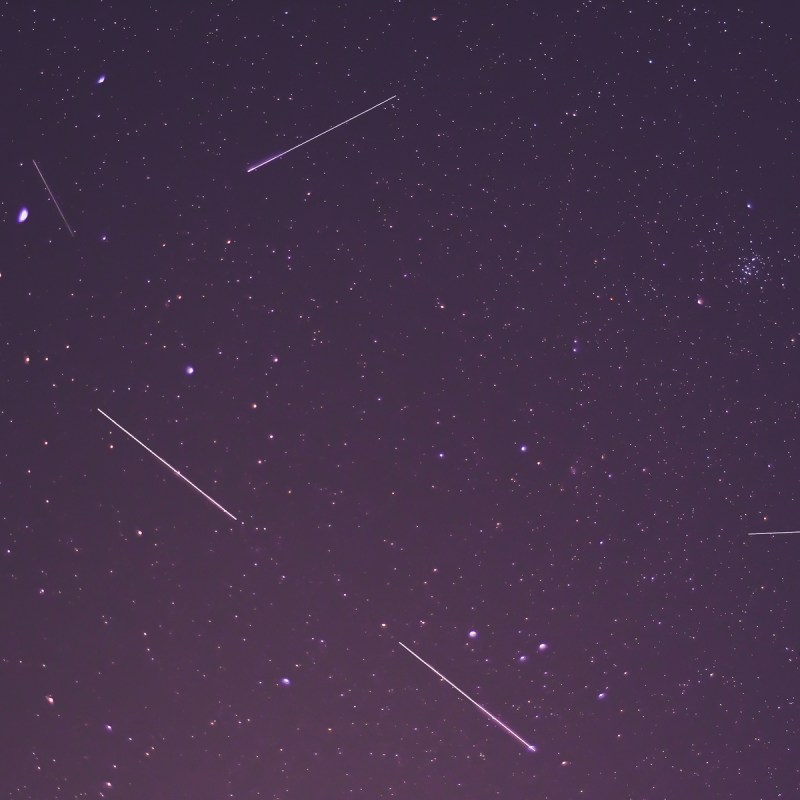
The Perseid meteor shower occurring each year in August may be the best-known meteor shower of the year, but the Lyrid meteor shower certainly has its own merits. For example, there can be surges, bringing as many as 100 meteors per hour. What’s more, the meteors can resemble fireballs.
Videos by TravelAwaits
Now for the best news: The Lyrid meteor shower lasts from about April 16 to 25. This year, its peak will occur April 22, just before dawn, the American Meteor Society explains.
Why Meteor Showers Occur
About the “size of a small town,” a comet basically is a giant “dirty snowball” made of frozen gasses with embedded rock and dust particles, NASA explains. They originate outside the orbit of the outermost planets then follow an elliptical orbit around the sun.
As a comet nears the sun, it warms up and its ice begins to change from solid to gas. This produces what’s known as a “coma,” which is the fuzzy-shaped cloud surrounding the ball of ice. The coma, by the way, can be thousands of miles in diameter, according to Live Science.
What’s fascinating is that radiation pressure from the sun — or solar wind — then “blows” the expanding coma out to form the tail that comets are known for, Space.com explains.
As comets orbit the sun, they leave what can be thought of as a debris trail behind. Every year, when Earth passes through these debris trails on its own orbit of the sun, the debris particles collide with Earth’s atmosphere. When this happens, the particles disintegrate, creating streaks across the sky.

The Lyrid Meteor Shower
The Lyrid meteor shower occurs each year in April when Earth passes through the debris trail of a comet called C/1861 G1 Thatcher, which was discovered on April 5, 1861 by A. E. Thatcher. The comet, by the way, takes 415 years to orbit the sun.
Named after the constellation Lyra because that’s where the streaking meteors appear to originate, the Lyrids is one of the oldest documented meteor showers. The comet itself may not have been discovered until 1861, but the first recorded sighting of a Lyrid meteor shower was in 687 B.C., according to Chinese historical texts, NASA reports.
How To Watch The Lyrid Meteor Shower
The Lyrid meteor shower lasts from about April 16 to April 25. Although the meteors won’t be as fast or as numerous as those during August’s Perseid meteor shower, you can still expect to see 10 to 15 meteors per hour during the shower’s peak. However, during an unexpected surge, it’s possible to see up to 100 meteors per hour, EarthSky explains.
The best time to see the meteor shower will be during its peak, which will occur after moonset and before dawn April 22. Details about moonset, dawn, and where the meteors can be seen in your local sky can be found here.
Watching a meteor shower is simple. All you need to do is go outside and lie down on your back with your feet to the east. Then look up at the night sky. After about 30 minutes, your eyes will adjust to the dark, and you will begin to see meteors.
Pro Tip: To really increase your chances of seeing the meteor shower, you’ll want to be somewhere dark — away from city lights. A map of dark places for optimal stargazing may be found here. Captivated by the night sky? See all our other stargazing content here.
